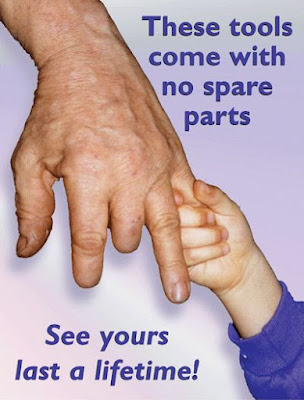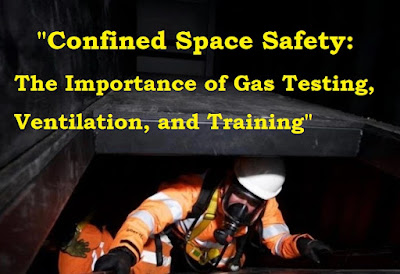"Safely Guarding Your Machinery:
A Guide to Machine Guarding Safety"
The use of machinery is
widespread in many industries and in home also, and it is essential to ensure
the safety of employees when operating and maintaining these machines. Machine
guarding is a critical aspect of workplace safety and helps prevent serious
injuries and fatalities. The below guidelines will provide information on the
importance of machine guarding and ways to ensure that your machinery is safely
guarded.
PERMIT TO WORK PTW WORK PERMIT
Hearing Protection Safety Why It Matters
Machine Guarding
Machine guarding is the practice of protecting employees from hazardous areas on or around machinery. This can include guards for moving parts, barriers for electrical components, and safety switches for emergency stop functions. The purpose of machine guarding is to prevent employees from coming into contact with dangerous parts of the machinery especially the rotating parts, such as gears, shafts, and other moving parts that can cause serious injury.
Importance of Machine Guarding
Machine guarding is important because it helps to prevent serious injuries and fatalities in the workplace. Without proper machine guarding, employees are at risk of amputation, crushing injuries, lacerations, and other serious injuries. In addition, machine guarding can also prevent machinery damage and downtime, which can result in costly repairs and lost productivity.
The Types of Machine Guards
There are several types
of machine guards, including:
Fixed guards
Interlocking guards
Adjustable guards
Self-adjusting guards
Two-hand control guards
Workplace Risk Assessment: A Key Step in Improving Safety
Fixed guards are permanent and cannot be easily removed. Interlocking guards only allow the machine to operate when the guard is in place. Adjustable guards can be adjusted to accommodate different types of workpieces. Self-adjusting guards automatically adjust to the size of the workpiece. Two-hand control guards require the use of both hands to start the machine, reducing the risk of injury.
How to Ensure Safe Machine Guarding
Conduct Regular
Inspections
Conduct regular inspections of your machinery to ensure that all guards and safety devices are in good working order. Ensure the guards are placed properly after the maintenance or any inspection.
Train Employees on Safe
Machine Operation
Train employees on safe machine operation, including the proper use of guards and safety devices.
Replace Worn or Damaged
Guards
Replace any worn or damaged guards to ensure that the machinery is safely guarded.
Follow Manufacturer's
Recommendations
Follow the manufacturer's recommendations for machine guarding to ensure that the machinery is properly guarded. Provide signages to alert employees.
Keep Work areas Clean
and Organized, Practice 5S
Keep work areas clean
and organized to reduce the risk of tripping and falling, which can result in
injury.
Managing Heat Stress in the Workplace : A Complete Guide
The Importance of Proper Maintenance
In addition to regular inspections and replacement of worn or damaged guards, it is also important to properly maintain machinery to ensure that it continues to function safely. Proper maintenance includes cleaning and lubricating moving parts, tightening loose bolts and screws, and replacing worn or damaged parts. Failing to properly maintain machinery can result in dangerous malfunctions and put employees at risk of injury.
Risks of Bypassing Machine Guards
Bypassing machine guards, either intentionally or unintentionally, can result in serious injury. For example, removing a guard to clean a machine can result in an injury if the machine is accidentally activated. It is important to never bypass machine guards and to always follow proper machine operation procedures.
Enforcing Machine Guarding Standards
It is the
responsibility of employers to ensure that their machinery is properly guarded
and that employees are trained on safe machine operation. OSHA (Occupational
Safety and Health Administration) has established machine guarding standards to
help protect employees.
ELECTRICAL SAFETY BASICS TRAINING
Machine guarding is an important aspect of workplace safety and helps prevent serious injuries and fatalities. By following proper machine guarding practices, such as conducting regular inspections, training employees on safe machine operation, and replacing worn or damaged guards, you can ensure that your machinery is safely guarded and that your employees are protected from hazardous areas.
Maintenance, cleaning
and lubrication, tight bolts and screws, worn or damaged parts, dangerous
malfunctions, bypassing machine guards, proper machine operation procedures,
OSHA, machine guarding standards, machine guarding, workplace safety, hazardous
areas, guards, safety devices, fixed guards, interlocking guards, adjustable
guards, self-adjusting guards, two-hand control guards, regular inspections,
manufacturer's recommendations, work areas.
Chemicals Hazards, Storage & Protection





